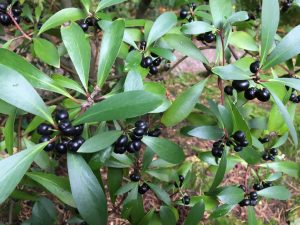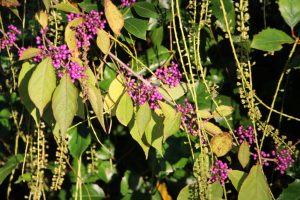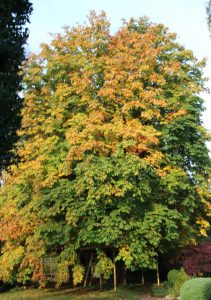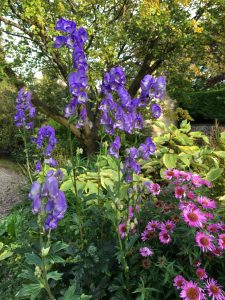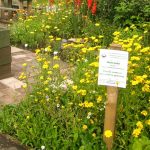Tales from the Garden – Seasons of mists and mellow fruitfulness
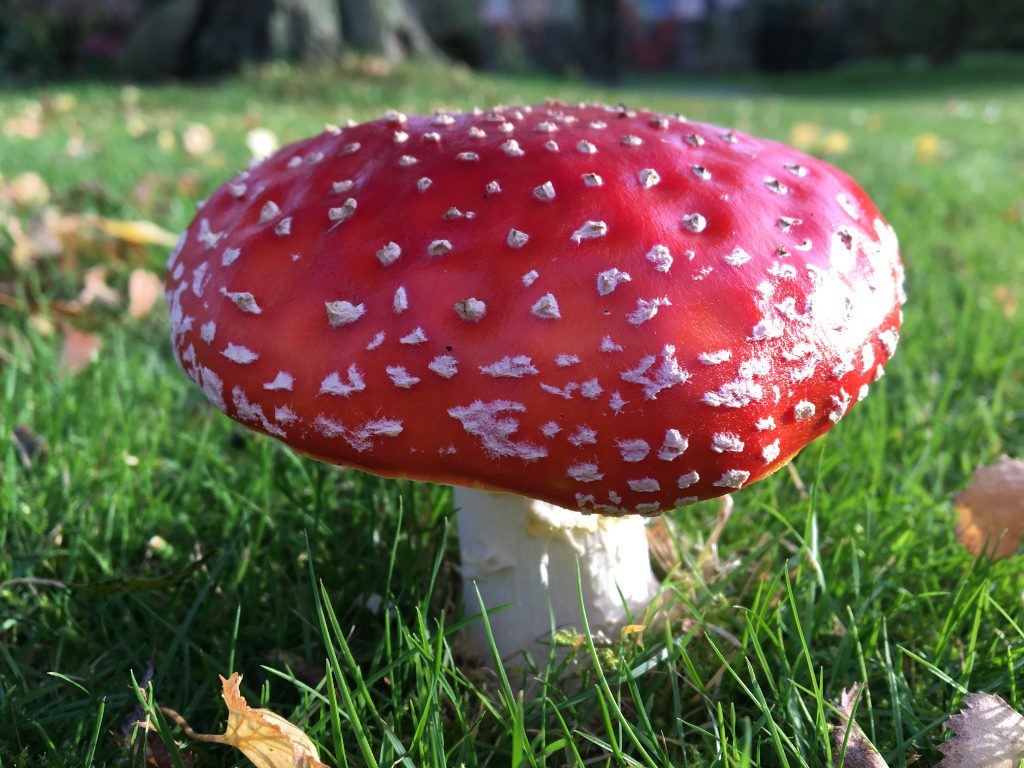
Amanita muscaria
We have had an unusual amount of fungi in the garden, probably because we have had a wet summer and autumn. Easily the most exciting is the Fly Agaric, or Amanita muscaria in Latin, as it stands out and can be seen from a distance. There are quite a few of them under the birch tree on the lawn. They are both poisonous and hallucinogenic to humans, but often they are partly eaten, and with our grandchildren I like imagining the mice or squirrels high on the strange ingredients of the fungus, or could it be the elves and fairies who find them so tasty?
It is also a good year for berries. This Drimys lanceolata grows in deep shade and has never had as many berries as are shown here. Its partner has no berries at all and my trusted Hillier’s Trees and Shrubs book tells me that male and female are different plants. It also tells me that it comes from Tasmania, so it is surprising that it does well in Edinburgh.
- Drimys lanceolata
- Callicarpa bodinieri ‘Profusion’?
The pale purple of Callicarpa berries is an unusual colour and you can sometimes find it in florists’ shops. This is probably bodinieri ‘Profusion’ which has an RHS Award of Merit which it fully deserves as it regularly produces a good crop of berries. If it is somewhat lanky in its habit, a bit of pruning puts it right, and its leaves go a good colour. It is seen here against the relics of the catkin-like flowers of Itea ilicifolia.
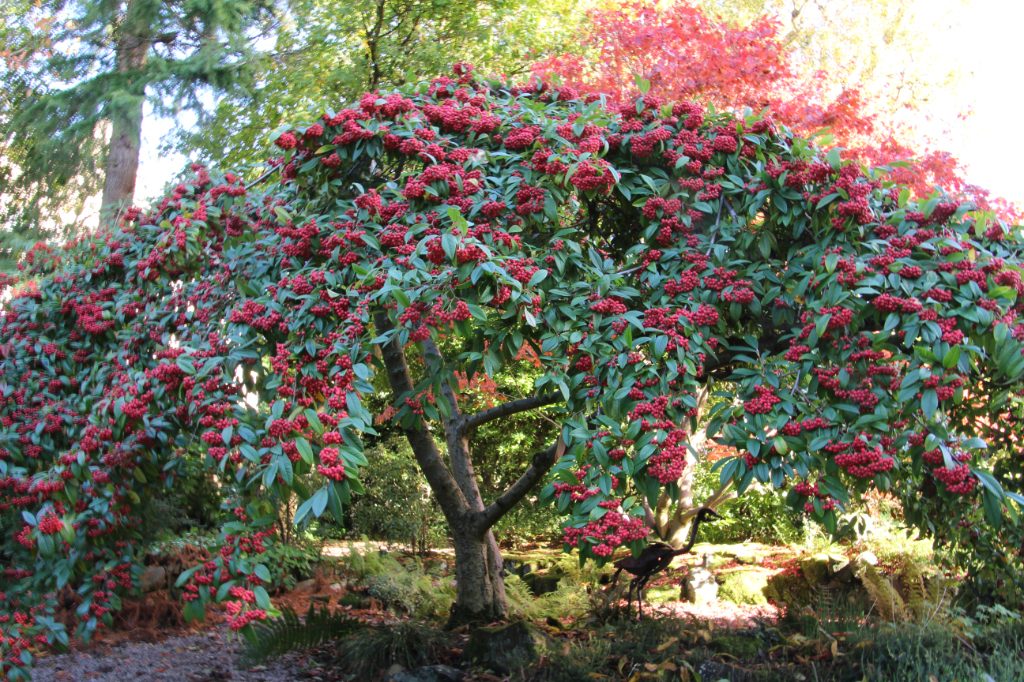
Cotoneaster cornubia
The best berries of all are on this Cotoneaster cornubia. Many years ago when Jake Hobson, a Japanese pruning expert, came here to give a workshop, as well as an evening talk to the Caley, he suggested that we take off all upward growing new growth on this Cotoneaster, as well as clearing the trunk. This has been very successful creating a good picture, but it is a demanding job as the more we prune it, the more it wants to send up vertical shoots!
- Horse Chestnut (Aesculus hippocastanum).
- Aconitum carmichaelii
The garden is all about how the light falls, especially at this time of year. It acquires a golden glow in autumn as the sun hits the enormous expanse of the horse chestnut tree. The tree changes colour quite gradually and usually hangs on to the leaves until they are all golden. But in the herbaceous border there is a different colour scheme with this chance combination of an old Aster (or whatever it is now) and Aconitum carmichaelii still looking good. This colour range, perhaps out of keeping with the prevailing tints, is also found in the Nerines, which flourish on the edge of a south facing bed, and revel in the sun and sharp drainage, lasting for many weeks.
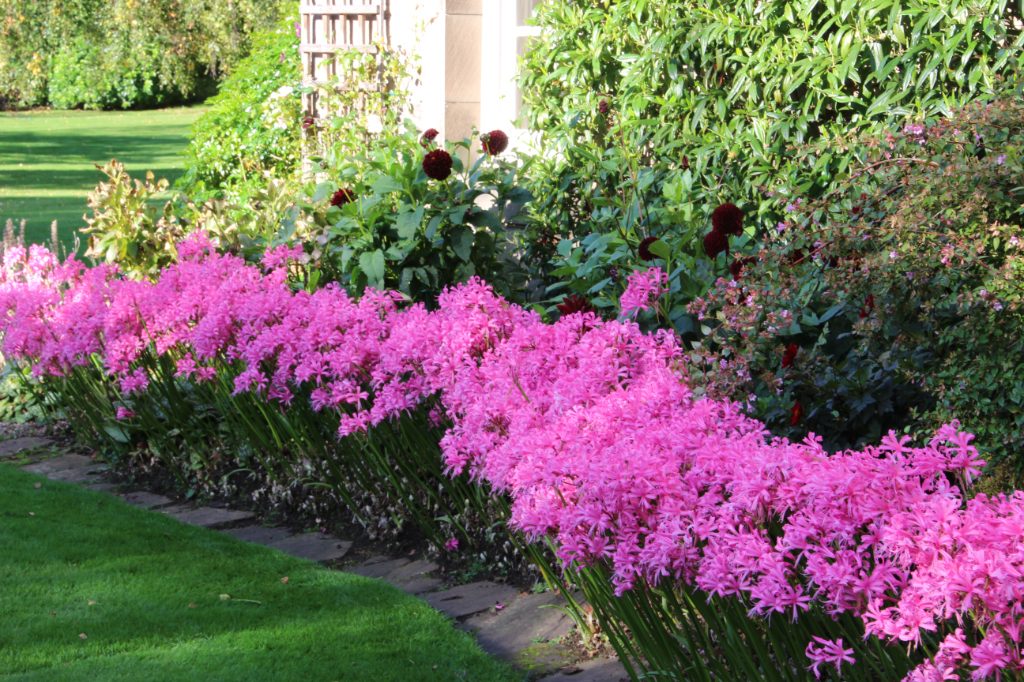
Nerine
Anna Buxton – 21st October 2019


